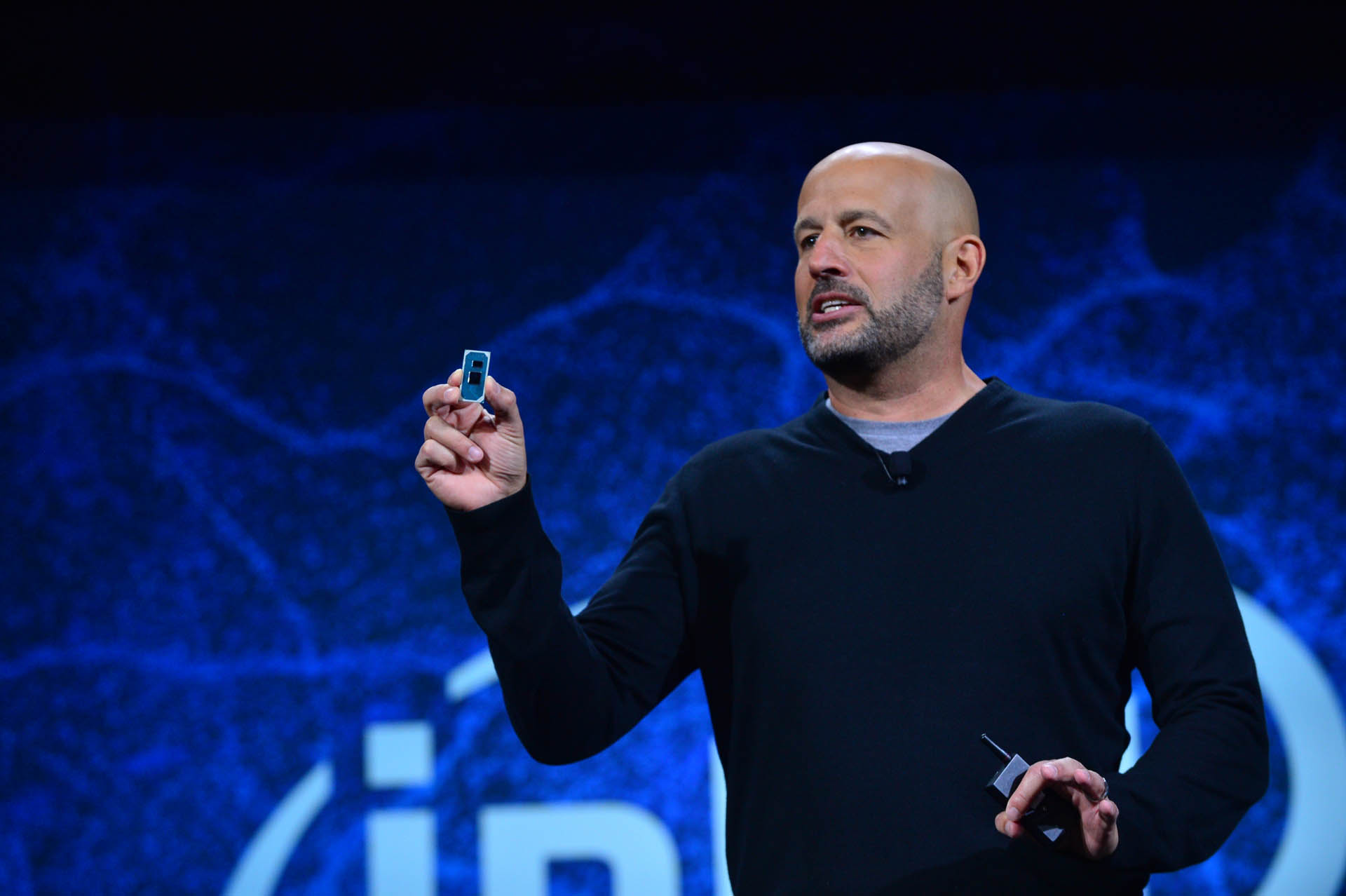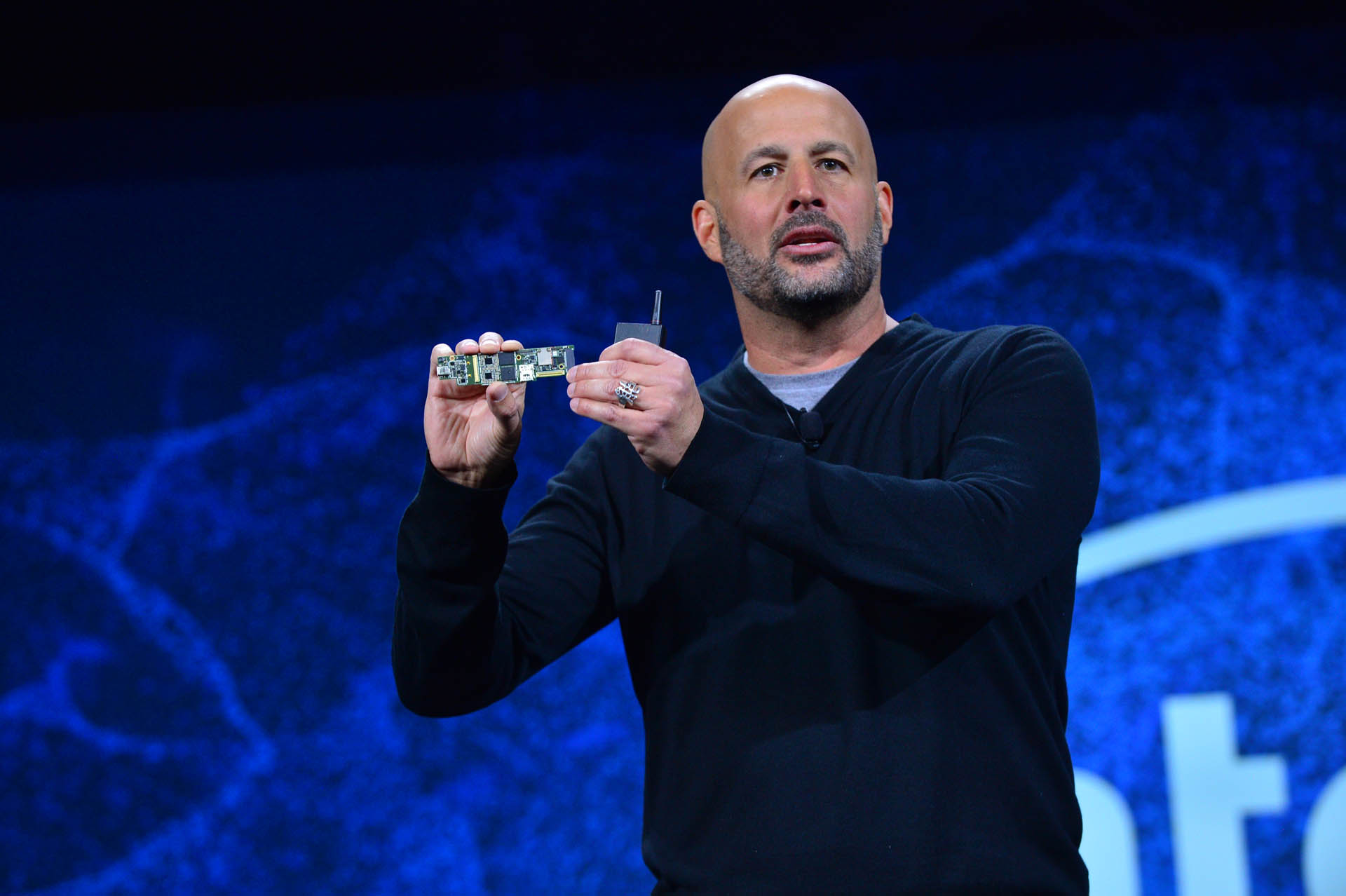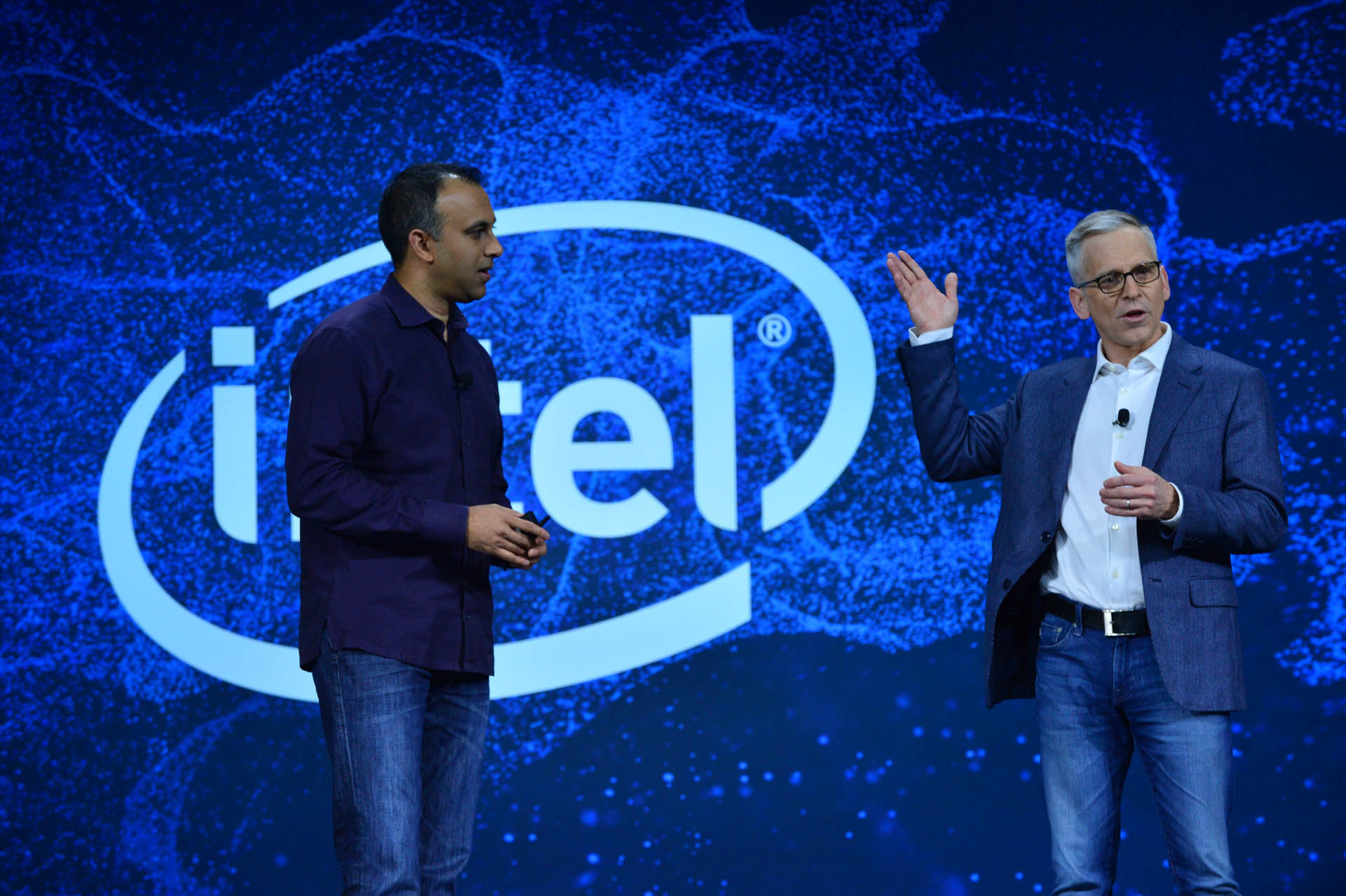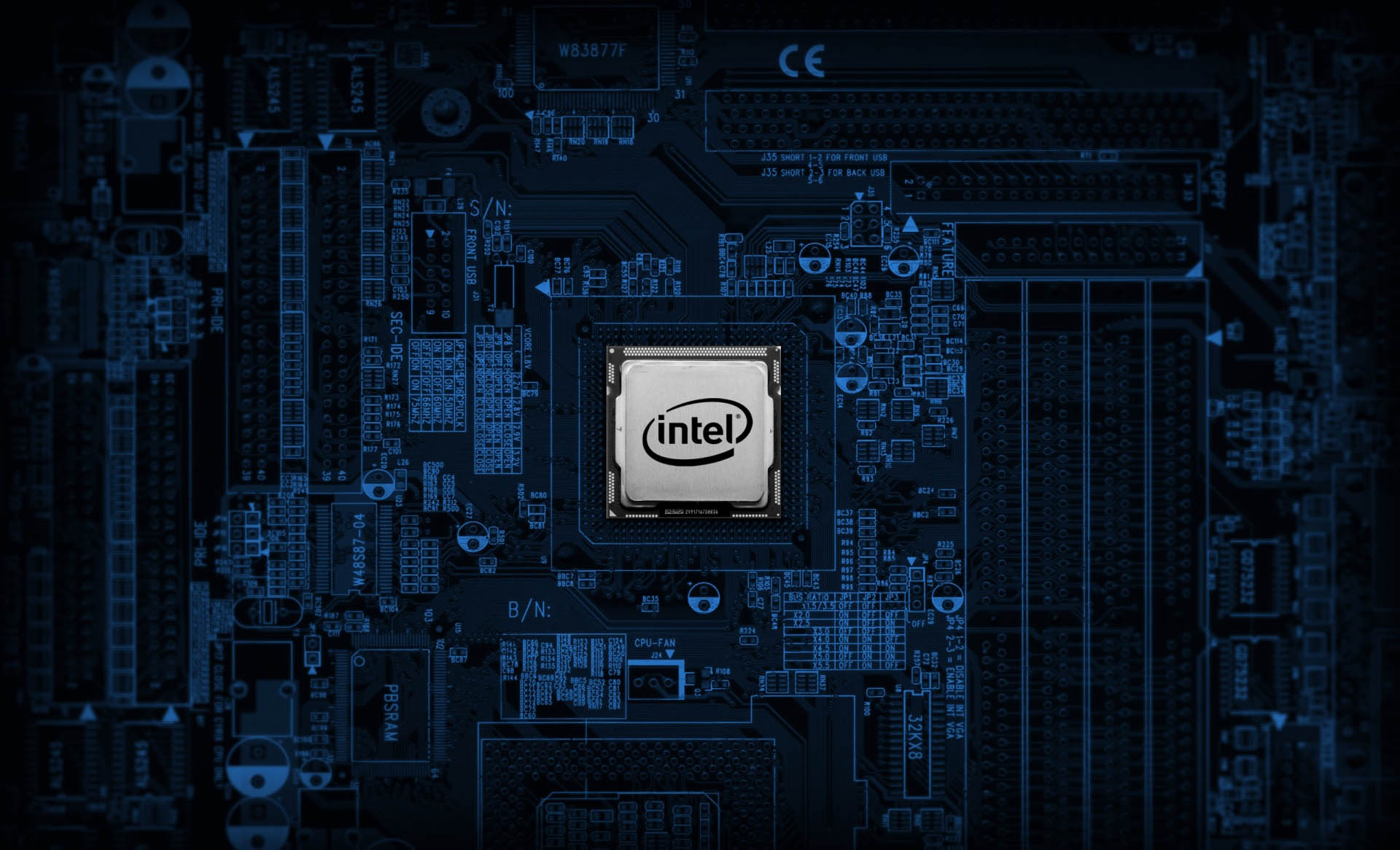As CES 2019 began to kick in to gear, Intel leaders, Gregory Bryant, senior vice president, Client Computing Group; Navin Shenoy, executive vice president, Data Center Group; and Professor Amnon Shashua, president and CEO of Mobileye, an Intel company took to the stage to showcase the company’s commitment to continuously improve the computing and communications foundation that will advance the way we experience the world and expand human potential.
The company made several announcements spanning PCs and new devices to diverse growth segments including artificial intelligence (AI), 5G and autonomous driving (AD). And Intel’s leaders discussed the innovation necessary across the data center, cloud, network and edge to enable the new user experiences and form factors of the future.
Intel showcased its latest Intel Xeon Scalable products, shipping today with advanced AI and memory capabilities, and 9th Gen Intel Core desktop products. It also announced new 10nm products for PCs, servers and 5G wireless access base stations, the future of new chip designs based on its 3D packaging technology (Foveros).
Intel also spotlighted what’s possible when technologies work seamlessly together across the entire spectrum of computing. Comcast and Intel are working together to bring the connected home to life. New initiatives with Alibaba demonstrate how Intel AI plans to deliver athlete tracking technology during the next Olympics. Mobileye and Ordnance Survey will bring us closer to the realization of smart cities and safer roads.

Gregory Bryant, Intel senior vice president in the Client Computing Group, displays an Ice Lake system-on-chip with 10nm technology during Intel Corporation’s news event at CES 2019 on Jan. 7, 2019, in Las Vegas. Intel displays how its technology is the foundation for the world’s most important innovations and advances at CES 2019 from Jan. 8-11 in Las Vegas. (Credit: Walden Kirsch/Intel Corporation)
Intel’s Client Computing Group is uniquely positioned to innovate across the industry because of its broad set of technologies under one roof, enabling Intel to advance the PC and deliver the foundation for the data-centric world today.
The vision for tomorrow’s mobile PC platform is firmly aligned with Intel’s upcoming first volume 10nm PC processor, code-named “Ice Lake.” Ice Lake brings a new level of integration with Intel’s new Sunny Cove microarchitecture, instruction sets to accelerate AI usage and a graphics engine, and Intel Gen11 graphics to improve graphics performance for richer gaming and content creation experiences. Intel’s OEM partners are expected to have new devices with Ice Lake on shelves by holiday 2019.
Intel also announced Project Athena, an innovation program and new set of industry specifications developed to help usher in a new class of advanced laptops designed to enable new experiences and capitalize on next-generation technologies, including 5G and artificial intelligence. From delivering the first connected PC with integrated Wi-Fi in the Intel Centrino platform to driving mainstream adoption of super thin and light designs, touchscreens, and 2 in 1 form factors with Ultrabook, Intel is uniquely positioned to be the catalyst in delivering the next-gen PC experience. Combining world-class performance, battery life and connectivity in sleek, beautiful designs, the first Project Athena devices are expected to be available in the second half of this year.

Musicians Kawehi (left) and Kevin Doucette (center) talk with Gregory Bryant, Intel senior vice president in the Client Computing Group, about the music they produce using Intel technology during Intel Corporation’s news event at CES 2019 on Jan. 7, 2019, in Las Vegas. Intel displays how its technology is the foundation for the world’s most important innovations and advances at CES 2019 from Jan. 8-11 in Las Vegas. (Credit: Walden Kirsch/Intel Corporation)
Intel is accelerating client innovation by taking new approaches to hybrid CPU architecture and packaging technologies. At CES 2019, Intel provided a sneak peek of a new client platform, code-named “Lakefield,” featuring the first iteration of its Foveros 3D packaging technology. This hybrid CPU architecture enables combining different pieces of IP that might have previously been discrete into a single product with a smaller motherboard footprint, which allows OEMs more flexibility for thin and light form factor design. Lakefield is expected to be in production this year.
Intel introduced new additions to the 9th Gen Intel Core processors that expand the family for a broader spectrum of desktop products. These processors deliver world-class performance to unlock incredible new capabilities and experiences for content creators and gamers at all levels. The first of the new 9th Gen Intel Core desktop processors is expected to be available starting this month.

Gregory Bryant, Intel senior vice president in the Client Computing Group, displays a “Lakefield” reference board during Intel Corporation’s news event at CES 2019 on Jan. 7, 2019, in Las Vegas. Lakefield features a hybrid CPU architecture with Intel’s Foveros 3D packaging technology. Intel displays how its technology is the foundation for the world’s most important innovations and advances at CES 2019 from Jan. 8-11 in Las Vegas. (Credit: Walden Kirsch/Intel Corporation)
Additionally Intel announced the Intel Nervana Neural Network Processor for Inference, or NNP-I. This new class of chip is dedicated to accelerating inference for companies with high workload demands and is expected to go into production this year. Facebook is also one of Intel’s development partners on the NNP-I. Additionally, Intel is expected to have a Neural Network Processor for Training, code-named “Spring Crest,” available later this year.
Intel also disclosed it is expanding its decade-long investment in network infrastructure with new 10nm-based network system on chip (SoC), code-named “Snow Ridge,” that has been developed specifically for 5G wireless access and edge computing. This network SoC is intended to bring Intel architecture into wireless access base stations and allow more computing functions to be distributed out at the edge of the network. Snow Ridge is expected to be available in the second half of this year.

Navin Shenoy (left), Intel executive vice president in the Data Center Group, speaks with Dr. Paul Kruszewski, CEO and founder of Wrnch, a company that tracks human movement using artificial intelligence, during Intel Corporation’s news event at CES 2019 on Jan. 7, 2019, in Las Vegas. Intel displays how its technology is the foundation for the world’s most important innovations and advances at CES 2019 from Jan. 8-11 in Las Vegas. (Credit: Walden Kirsch/Intel Corporation)
Intel and Comcast are laying the foundation to deliver new immersive experiences in the home.
It is estimated that each person in North America will have 13 or more connected devices by 2022, and demands are increasing for high-resolution content streaming, gaming and more. The collaboration between Intel and Comcast will deliver faster speeds, more capacity and responsive networks that will bring new immersive experiences to millions of people, including during the Olympic Games Tokyo 2020. For the next wave of gigabit and beyond broadband, Intel is working with cable industry leaders on a global standard for 10 Gigabit technology and is starting to test this in lab settings. Next up, Comcast and Intel are also working together to develop Wi-Fi 6-enabled technologies.
From next-generation communications to a new era of computing, Intel technology is the foundation for the world’s most important innovations and advances.
[rns_reactions]

